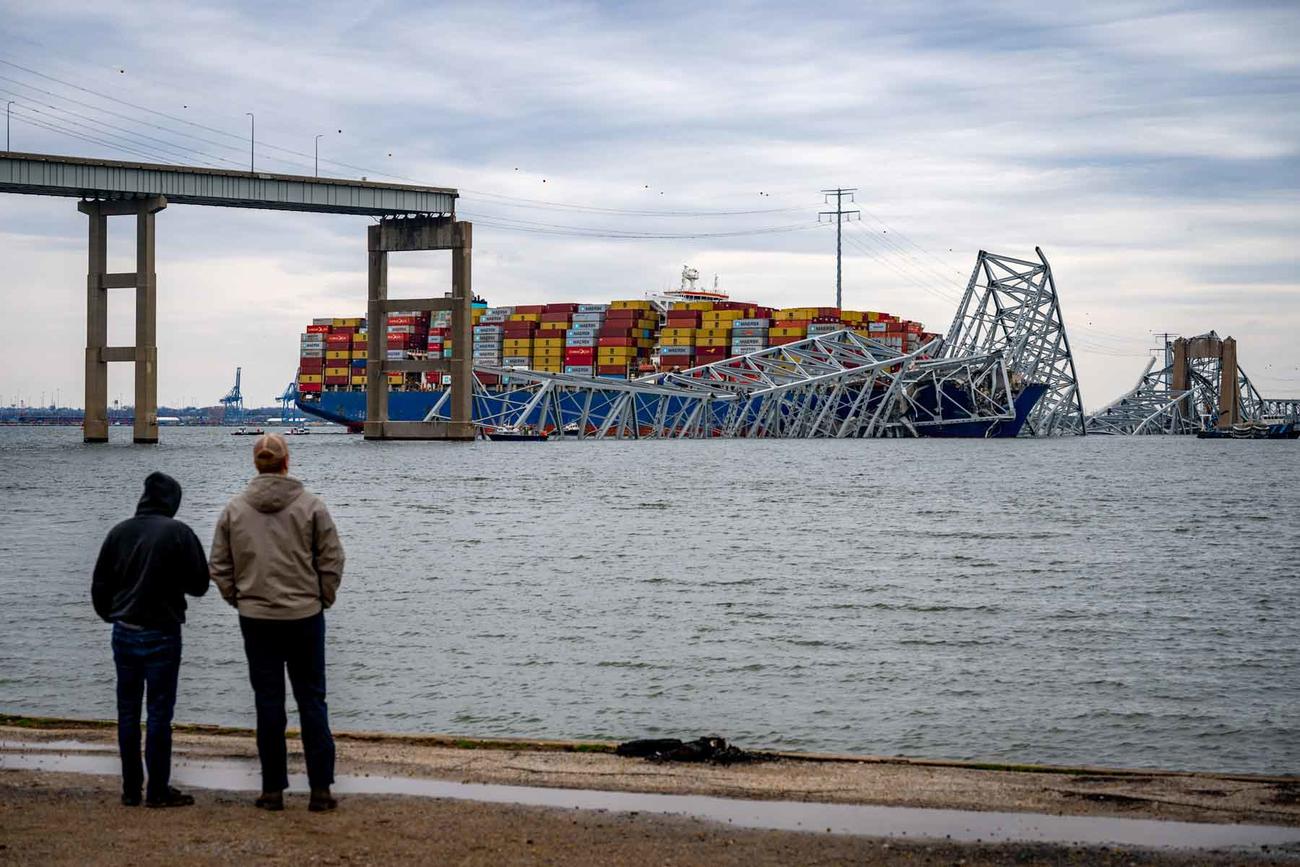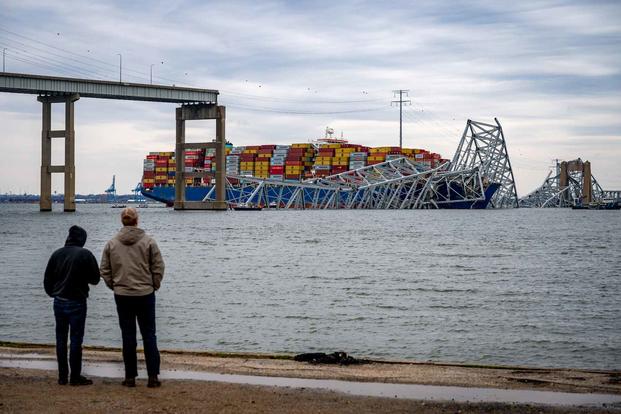

BALTIMORE — In the crucial four minutes between when the container ship Dali lost power and it struck the Francis Scott Key Bridge, the two pilots aboard ordered an anchor dropped, asked for emergency help from nearby tugboats, warned surrounding vessels and called a pilot dispatcher on a cellphone. That dispatcher then notified the Maryland Transportation Authority, which promptly shut down vehicle traffic onto the bridge, and the Coast Guard.
The exact protocol — how to halt vehicle traffic due to a threat from a ship — had rarely, if ever, been needed. But just 13 days before the incident, a harbor pilot had discussed updates to the procedure with fellow port stakeholders.
The Port of Baltimore Harbor Safety and Coordination Committee, a joint industry-government advisory panel, met March 13 at the Association of Maryland Pilots headquarters in Brewers Hill in Southeast Baltimore. The pilots, licensed by the state as expert navigators, are required by state law to guide large ships in Maryland waters.
A group of 47 maritime officials and civilians gathered, some in person and others by phone, to discuss dozens of topics. They talked about deepening one of the harbor’s anchorages, an upcoming inspection of the Chesapeake Bay Bridge near Annapolis, and even Katie Pumphrey’s planned marathon swim into Baltimore.
Capt. John Kinlein, a member of the Board of Pilots, brought up another concern: What to do in case a ship lost “steering or propulsion” as it approached the Key Bridge or the Bay Bridge.
During an earlier meeting in December, Kinlein suggested altering the protocol “due to the unreliability of reaching someone in the current protocol,” according to meeting minutes.
“Ideally the pilots would contact someone immediately by VHF or telephone and say they need to shut down the bridge due to an emergency situation,” the December minutes state.
At the March meeting, Kinlein shared with other harbor stakeholders that the protocol had “been revised.”
“In such an event,” minutes from the March meeting read, “the pilots would contact someone at the USCG Command Center immediately and say they need to shut down the bridge due to an emergency.”
The protocol that was revised was the pilots’ internal protocol, the Coast Guard and the transportation authority told The Baltimore Sun on Thursday. The revised procedure was “only presented to the committee as an FYI,” a transportation authority spokesperson said.
However, it’s unclear precisely what the protocol was and how it was changed.
Asked whether the ship strike emergency protocol was followed during the Dali disaster, a spokesperson for the Maryland pilots declined to comment. Kinlein declined to comment, too, citing the National Transportation Safety Board’s ongoing investigation of the event.
Less than two weeks after the protocol change was discussed, the 984-foot Dali lost power and collided directly with one of the bridge’s support piers in a catastrophe unprecedented in Maryland waters. Six men on the bridge to patch potholes were killed.
The transportation authority said Thursday that, without further research, it could not identify when, if ever, the Key Bridge was closed due to a wayward ship.
Any such instances would appear to be few and far between. Prior to the March 26 collapse, the most well-known incident of a vessel hitting the Key Bridge came in 1980 when a 390-foot ship (a fraction the Dali’s size) lost power and clipped part of the bridge. It did relatively little damage to the span, about $500,000 worth.
The harbor safety committee meets quarterly and that March 13 meeting was its most recent. A planned meeting in June was canceled due to an event the same day that promoted the reopening of the port’s main shipping channel, as well as Fleet Week activities, Maryland Port Administration spokesperson Richard Scher said.
The roughly two-hour meetings cover a range of topics. In prior years, another pilot brought up on several occasions the potential for vessels hitting bridges and what could be done to avoid or react to such a scenario. Coast Guard Lt. Cmdr. Kate Newkirk, who has attended harbor safety meetings since transferring last summer to the service’s Maryland-National Capital Region, said the gatherings give agencies a chance to ask for and provide advice.
It isn’t uncommon for attendees to discuss calamities and how to avoid them.
“Some of these big, catastrophic events are kind of always in our minds at these meetings,” Newkirk said Thursday in an interview.
There were two pilots aboard the Dali when it departed Baltimore on March 26 for Sri Lanka. One of them, an apprentice, called a pilot dispatcher after the ship lost power. That dispatcher notified the transportation authority and then the Coast Guard.
At 1:27:53 a.m., less than three minutes after the Dali first lost power, per the NTSB’s preliminary report, the transportation authority duty officer “ordered the units stationed at the ends of the bridge to close the bridge to all traffic.” Just over a minute later, the ship struck the bridge’s pier.
Quickly closing the bridge almost certainly prevented more casualties. Video of the incident shows several vehicles driving over the span in the minutes before the bridge was closed. In 1980, when a ship crashed into Florida’s Sunshine Skyway Bridge and knocked it over, 35 people were killed.
The construction workers on the Key Bridge were in their vehicles on a break and had “zero warning” the Dali was headed for the bridge, said L. Chris Stewart, an attorney for the families of multiple victims as well as survivor Julio Cervantes, in April.
In archived radio communications, transportation authority police officers discussed the workers just before the collision.
“Might want to notify whoever the foreman is,” a duty officer said, “see if we can get them off the bridge temporarily.”
Less than a minute later, the ship collided with the bridge and a first responder radioed: “The whole bridge just fell down. Start, start whoever. Everybody. The whole bridge just collapsed.”
Cervantes, the only member of his construction crew to survive, shared his account of what happened for the first time publicly Wednesday on NBC. He fell into the Patapsco River in his truck and was submerged in water up to his shoulder before escaping. Twenty-five minutes later, a transportation authority police boat found him in the water.
——-
©2024 The Baltimore Sun. Visit at baltimoresun.com. Distributed by Tribune Content Agency, LLC.
© Copyright 2024 Baltimore Sun. All rights reserved. This material may not be published, broadcast, rewritten or redistributed.
